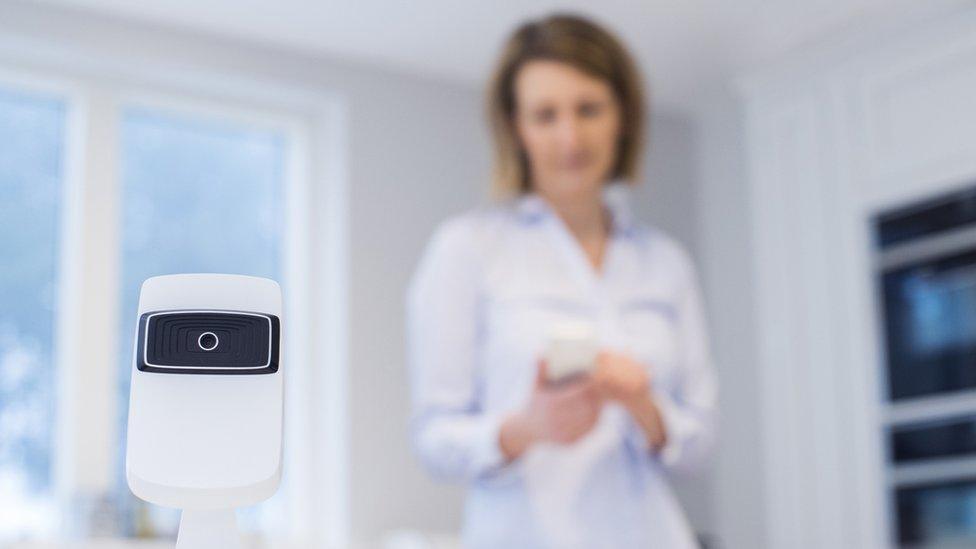Smart home gadgets in domestic abuse warning
- Published

A list offering guidance to those affected by smart home devices being used to control or harass them within abusive relationships has been published online.
It is largely aimed at women.
by the New York Times detailed examples of "technology-facilitated abuse".
This involves devices being activated remotely in order to cause fear or confusion - such as remotely altering the temperature or locking doors.
A woman who runs a shelter for victims of domestic violence in the US told the newspaper some were "losing control" of their own homes.
The UK team behind the , including researchers from Privacy International and University College London, says it was created to "better inform and guide victims of technology-facilitated abuse as well as those working with them".
It is divided into advice about:
the internet of things - devices and gadgets connected and controlled via the net
digital security for women and children
Cyber-security expert Prof Alan Woodward, from Surrey University, told the ҙуПуҙ«ГҪ smart devices could be intimidating to use, especially if installed by others.
"Imagine how you can make someone feel small and stupid because they can't operate smart gadgets 'properly' - and how you can convince the abused person how much they need you because only you can operate it," he said.
"What everyone needs to remember is that user-shaming in whatever context shows a failure of the designers, not the users."
Security researcher Ken Munro said there were many cases of former partners using technology to abuse an ex. In some cases, he said, the only way to lock out the access partners used to enjoy was by replacing the gadget entirely.
He said it was "critical" to review smart home tech when a relationship ended.
"You would probably change the door locks on your home in the event of your partner moving out. You should seriously consider changing your smart locks too," he said in a
- Published14 April 2018
- Published27 June 2018
- Published28 July 2016